As one of the most popular and distinctive cat breeds, the Abyssinian stands out for its elegant appearance, playful nature, and affectionate demeanor. For potential cat owners, understanding the differences between male and female Abyssinians is an important part of selecting a new feline companion.
Here we will focus on male vs female Abyssinian, dissecting the nuances that may influence your decision as you consider bringing one of these charming animals into your life. Join us as we delve into the details that define the males and females of this extraordinary breed.
When exploring the male and female Abyssinian cats, several key aspects come to light. From differences in size and behavior to varying health requirements, each gender has its unique traits.
While both share the breed’s hallmark intelligence and curiosity, prospective owners may find that a specific sex better aligns with their lifestyle or preferences. In this blog, we will provide an in-depth analysis of each sex, offering valuable insight into their specific needs and characteristics.
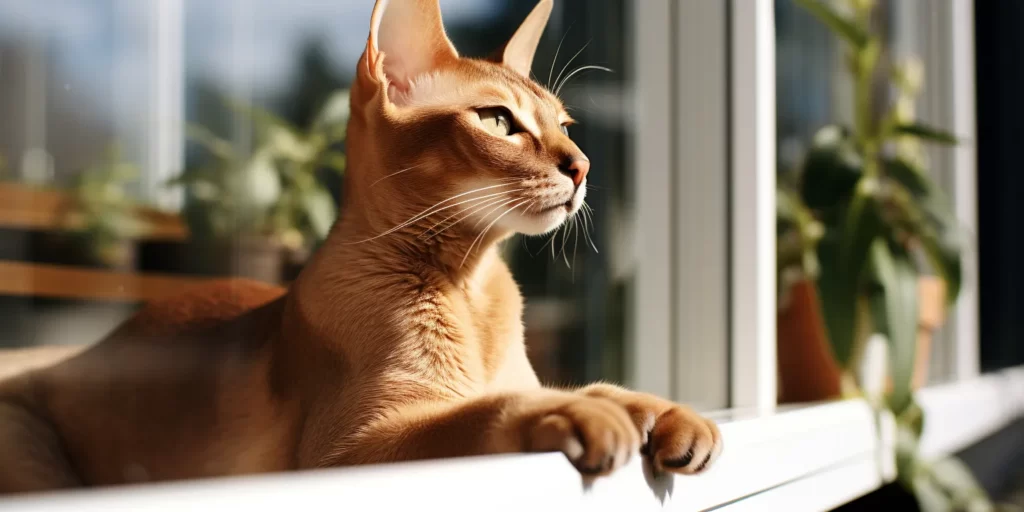
Visual Differences
| Male | Female | |
|---|---|---|
| Average height (adult): | 8 – 10 inches | 8 – 9 inches |
| Average weight (adult): | 7 – 12 pounds | 6 – 9 pounds |
| Lifespan: | 9 – 15 years | 9 – 15 years |
| Energy Level: | High | High |
| Grooming needs: | Low | Low |
| Family-friendly: | Yes | Yes |
| Other pet-friendly: | Yes, if socialized properly | Yes, if socialized properly |
| Trainability: | High | High |
Male Abyssinian Overview
The male Abyssinian cat is known for his larger stature compared to his female counterpart. Typically more robust, the males of this breed exhibit a muscular and athletic body that reflects their active nature.
They are playful and often more outgoing, which makes them great for families looking for a more interactive pet. Males are also known to be territorial at times, marking their presence with more assertiveness than females.
Male Abyssinians are full of energy, requiring ample playtime and mental stimulation to stay content. It’s not uncommon for them to be the instigators of fun within a household, often encouraging play with both humans and other pets alike. Their need for engagement means they thrive in environments where they can explore and satiate their innate curiosity.
Sociability is another key trait of the male Abyssinian. They tend to be very personable and often seek out human interaction, showing affection with their immediate family members.
Males can be quite vocal, expressing their needs or desires, which might include social interaction or playtime. This communicative behavior also strengthens their bond with owners who enjoy a chatty companion.
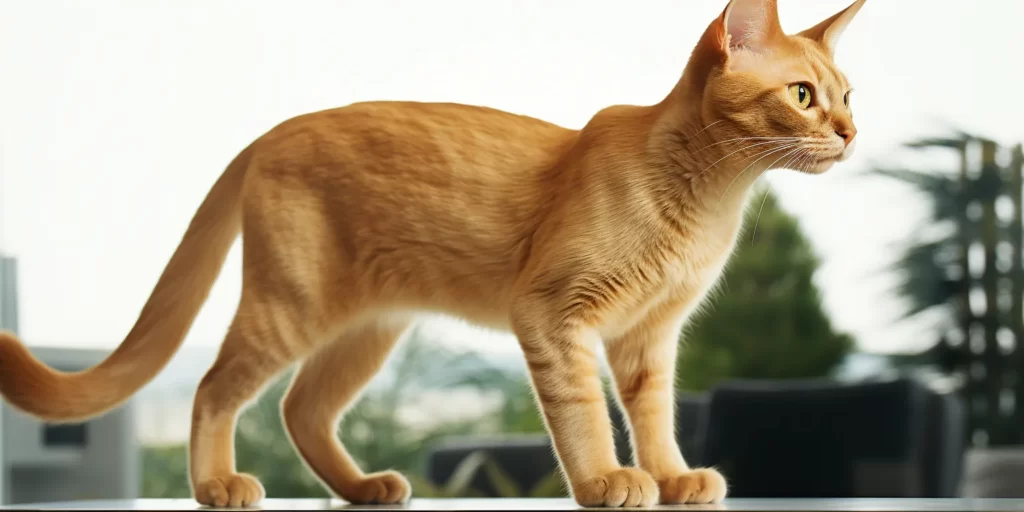
Training A Male
Training a male Abyssinian can be a delightful experience due to their intelligence and willingness to please. They respond well to positive reinforcement techniques, such as treats and praise, making them quick learners when it comes to tricks and commands.
It’s important to start training early in their kittenhood to establish good habits and help them understand the boundaries within the home.
Ample stimulation is crucial for maintaining the interest of a male Abyssinian during training sessions. Due to their high energy levels and keen intellect, these cats benefit from puzzle toys and interactive games that challenge their ingenuity. Consistency with training is key; set regular training times and stick with short but frequent sessions to keep your male Abyssinian engaged.
Patience is also paramount when training a male Abyssinian. While they are quick learners, they can also get easily distracted by their environment or sudden urges to play. Therefore, creating a calm training environment away from distractions can contribute significantly to their learning success.
Health & Care
The health and care of a male Abyssinian follow similar guidelines to any high-energy cat breed. Regular veterinary checkups are essential for early detection of any potential health concerns, including kidney issues or periodontal disease which are common in this breed. A diet rich in high-quality proteins helps maintain their muscular physique and supports overall health.
Neutering is highly recommended for male Abyssinians if breeding is not intended. This can reduce territorial behaviors such as spraying and may also curtail tendencies toward aggression that some intact males display.
Additionally, neutering helps prevent the risk of certain types of cancer and contributes to a potentially longer lifespan.
In terms of grooming, while Abyssinians have short coats that are relatively low maintenance, they still benefit from regular brushing to remove loose fur and distribute natural skin oils. This will not only keep their coat shiny but will also minimize shedding around the house.
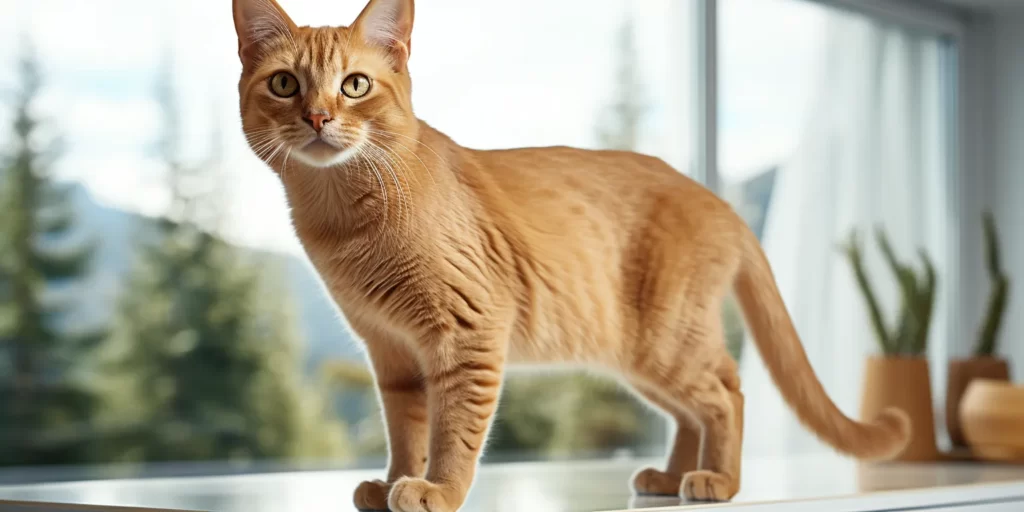
Suitable for:
Male Abyssinians are particularly suitable for active households where there is plenty of interaction throughout the day. They are excellent companions for other pets, including cats and friendly dogs, given proper introductions have been made.
Families with older children who can engage in play without being too rough may find a male Abyssinian an ideal pet.
Those who work from home or retirees often find male Abyssinians perfect because of their desire for companionship and activity during the day. They can be great buddies for those who have enough time to dedicate to play sessions and whom appreciate an interactive pet presence in their lives.
Female Abyssinian Overview
Female Abyssinians are renowned for their grace and finesse. They tend to be a bit smaller in size compared to males and usually have a more petite frame. Despite their daintier appearance, females are just as playful and energetic as males but can sometimes be more independent.
Their independence doesn’t mean they lack affection; female Abyssinians form strong attachments with their families but might not always demand constant attention.
The females can be slightly more reserved at times, choosing to observe before acting. This trait can make them seem more cautious and discerning in new situations or environments. They also typically display less territorial behavior than males, which might result in fewer dominance-related issues if housing multiple pets.
While both sexes share an impressive level of intelligence, female Abyssinians may sometimes utilize theirs in a more calculated fashion during play or exploration. Their agility combined with intellectual prowess makes them adept hunters—something to consider if you keep smaller pets or have local wildlife.
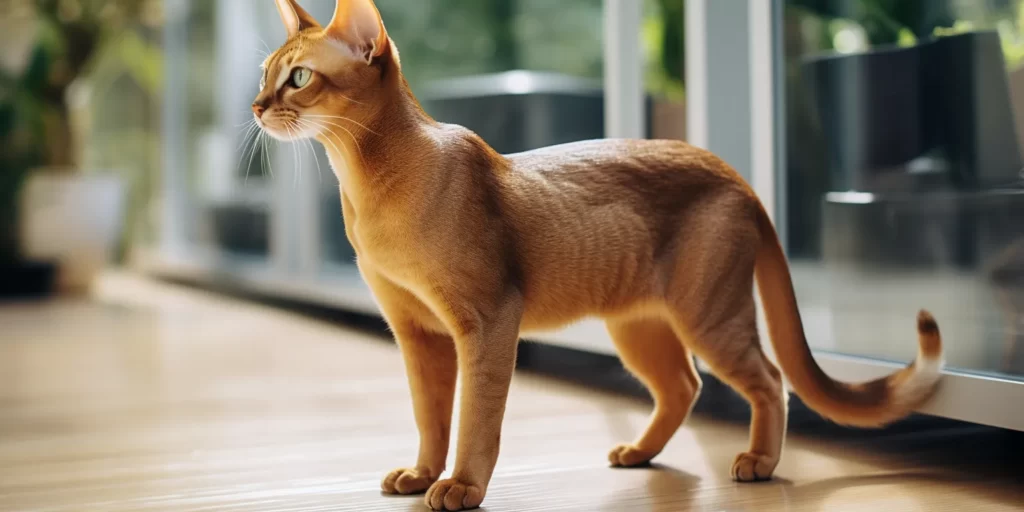
Training A Female
Training a female Abyssinian requires understanding her independent streak while still engaging her clever mind. These cats enjoy challenges, so introducing varied activities or toys that stimulate problem-solving will help keep training sessions interesting for them. Like males, they respond well to rewards such as treats or affection but might require a little more persuasion if they’re not in the mood to participate.
One strategy for training a female Abyssinian is to incorporate training into playtime—combining fun with learning no doubt captures her attention better. Regular training routines will help her understand what’s expected but also allow for bonding moments between the cat and owner.
When training female Abyssinians, it’s important to respect their space as pushing them too hard can backfire—resulting in avoidance behaviors. Patience and gentleness are key when dealing with a female’s sensitive demeanor during learning exercises.
Health & Care
Similar care attention is needed for female Abyssinians as with males, but there are some gender-specific considerations to take into account. Females should be spayed if not bred; this prevents unwanted pregnancies and reduces the risk of health issues such as mammary tumors or uterine infections.
Diet plays a critical role in maintaining health; therefore, providing a balanced diet suited to her needs is vital. Pregnant or nursing females will have different nutritional requirements compared to those that are spayed or non-reproductive.
Regular grooming is essential for maintaining their short yet silky coat in top condition while also reducing hairballs—a common issue among felines. Establish a grooming routine that includes brushing, nail trimming, and dental care from an early age so she becomes accustomed to it thereby making the process easier throughout her life.
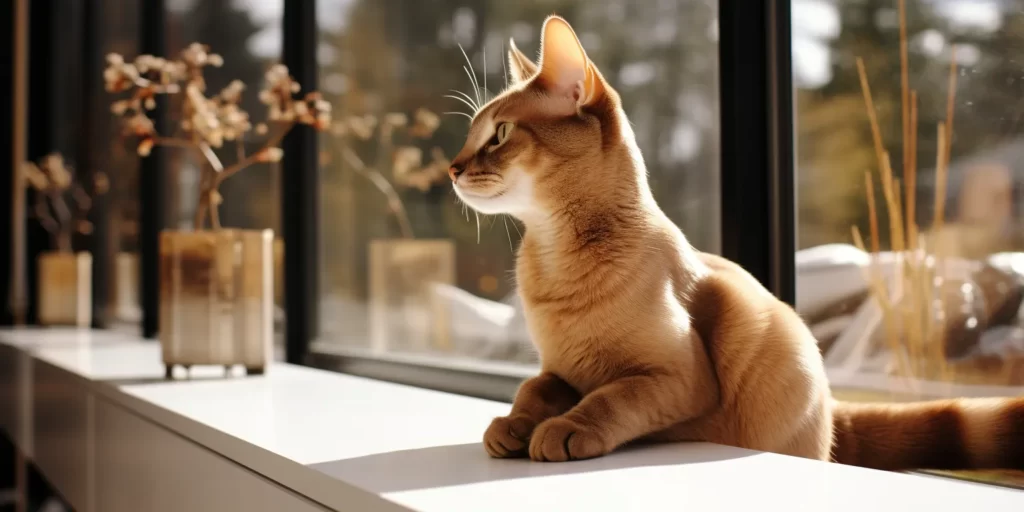
Suitable for:
Female Abyssinians are often well-suited to quieter households where they can enjoy spaces of peace alongside moments of engagement. They do well in environments where they have the freedom to explore at leisure combined with occasional interactive play sessions with their owners.
They’re ideal companions for elderly individuals or those who live alone because females might be less demanding yet provide warm company. Individuals willing to appreciate an independent cat who bonds on her own terms may prefer a female Abyssinian.
Which One Is Right for You?
Choosing between a male vs female Abyssinian ultimately comes down to personal preference and lifestyle compatibility. Male Abyssinians typically exhibit larger sizes, higher energy levels, and strong sociable traits making them ideal for dynamic homes full of activity.
If you’re looking for a playful extension to your family that thrives on interaction, a male might be the perfect match.
Conversely, if you prefer a slightly more independent but equally charming companion, a female Abyssinian might suit you better. With potentially less territorial behavior and a somewhat calmer demeanor, females can adapt well to various home environments—perfect for those seeking a graceful yet spirited feline friend.

Conclusion
Whether you choose a male or female Abyssinian breed, both genders bring joy through their exuberant personalities and striking beauty. Understanding the slight differences between males vs females is just one step towards welcoming an Abyssinian into your home—it’s about finding which one aligns with your life rhythm and affection expectations.
Remember that individual personalities may vary regardless of gender; getting to know the cat first often offers better insight than any stereotype might suggest. Above all else, providing love, attention, appropriate care, and enrichment will ensure that your chosen companion—be they male or female—will thrive alongside you for many years to come.